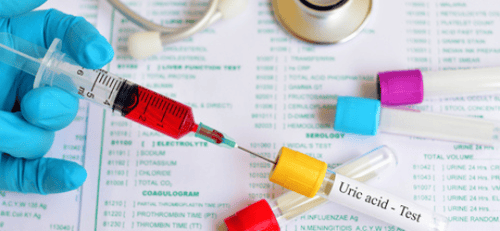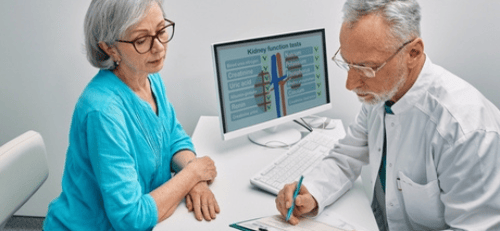For a successful course of therapy and increased survival rates, it is essential to be able to identify and diagnose cancer in its earliest stages. The use of gastroscopy has become one of the most effective ways to detect cancer, especially for detecting gastrointestinal tumors early on.
The creation and improvement of gastroscopy is one such example of how the constant pursuit of early cancer detection has resulted in substantial improvements in medical technology. This method, which has historically been used to identify digestive diseases, is crucial for the early diagnosis of gastrointestinal tumors. Gastroscopy gives doctors a way to visually examine the lining of the esophagus, stomach, and upper part of the small intestine, which enables them to find anomalies, including tumors, and makes it easier to take specimens for additional investigation.
Gastroscopy is a vital early warning system, especially for esophageal and gastric (stomach) cancers. The capacity to detect early indicators of cancer using gastroscopy generally precedes symptom onset as these malignancies frequently go unnoticed until they are advanced due to their initially modest symptoms. The prognosis is greatly improved by this early discovery because treatments are frequently more successful when the disease is in its early stages.
What is Gastroscopy?
A gastroscope is used during a technique known as gastroscopy to look at the lining of the esophagus, stomach, and upper small intestine. The tool, which is a tiny, flexible tube outfitted with a light and camera enters, is inserted through the mouth of the patient and it is then directed down to the stomach and upper duodenun (1st part of the small intestines). This enables medical professionals to visually examine these regions for anomalies including inflammation, ulcers, bleeding or malignancies.
Although gastroscopy is frequently done to investigate symptoms like stomach pain, nauseousness, or trouble swallowing, its significance as a tool for finding cancer is immense. It enables direct sight of the upper gastrointestinal tract and aids medical professionals in identifying cancerous tumors before symptoms manifest. Additionally, during the surgery, doctors might collect tissue samples (biopsies) for laboratory analysis, which can confirm the existence of cancer cells.
The Crucial Role of Early Cancer Detection
The value of early cancer detection cannot be emphasised enough. The 5-year relative survival percentage for stomach cancer that is localised (i.e., limited to the stomach) is 69%, but this number plummets to just 5% if the cancer has spread to other areas of the body. These figures highlight the possibility for early detection, which gastroscopy aids in saving lives.
The American Cancer Society reports that the 5-year survival rate for locally advanced stomach cancer is approximately 70%; however, when the cancer has spread to distant organs, the rate drops to only about 6%. The importance of early diagnosis methods like gastroscopy is shown by the dramatic gap in survival rates.
Gastroscopy Procedure: What to Expect
A few hours of fasting are required in order to prepare for a gastroscopy. Particularly for people with diseases like diabetes or heart disease, the timing of medications may need to be modified . Sedation is frequently given throughout the procedure, which typically lasts less than an hour, to guarantee the patient's comfort.
Patients could feel a little discomfort following the treatment, such as sore throat. While biopsy results may not be available for several days, the outcomes of the gastroscopy are typically discussed promptly after the surgery.
Safety and Risks of Gastroscopy
The process of gastroscopy is typically regarded as safe. However, there could be hazards, just like with any procedure. There is also a very slight chance of minor bleeding or, extremely rarely, a perforation (tear) in the lining of the stomach or esophagus. It's crucial to remember that these dangers are extremely uncommon and that the life-saving advantages of early cancer identification with gastroscopy much outweigh these potential risks.
For people who have a higher risk of developing gastrointestinal cancers, routine gastroscopy tests are frequently advised as part of a preventative health approach. This includes people with specific pre-existing diseases or a family history of certain cancers.
The Role of Gastroscopy in a Proactive Health Approach
Routine health examinations can frequently feel like a nuisance in our busy lives. They are crucial to our general health and wellbeing, though. In light of this, gastroscopy is crucial for the early diagnosis of gastrointestinal malignancies.
Regular gastroscopy tests may be indicated for people with risk factors, such as a family history of certain cancers or diseases like Barrett's esophagus. If you fit into one of these groups, it's critical to discuss the best course of action for your health with your healthcare professional.
Gastroscopy: A Vital Strategy in the Fight Against Cancer
Our most powerful tool in the ongoing war against cancer is early detection. Here, the comparatively non-invasive procedure of gastroscopy shines as a ray of hope. It permits the early identification of anomalies, such as malignant growths, frequently before symptoms arise, by giving a direct vision of the upper gastrointestinal tract.
Gastroscopy is a procedure that can save lives in addition to serving as a diagnostic tool. It enables medical professionals to both recognise potential health risks and obtain tissue samples for additional examination—an essential step in confirming a cancer diagnosis. The likelihood of a successful treatment is greatly increased by early detection and diagnosis, which also improves patient quality of life and survival rates. Regular gastroscopy screenings and check-ups with your healthcare provider can help you spot and catch early changes and give you the chance to take action before cancer develops or advances.
References
- Unintentional Weight Loss. Retrieved 12 January 2024. From, https://www.nidirect.gov.uk/conditions/unintentional-weight-loss#:~:text=to%20be%20treated.-,How%20much%20weight%20loss%20is%20a%20concern,be%20a%20sign%20of%20malnutrition.
-
Gastroesophageal Reflux Disease (GERD). (2023). Mayo Clinic. Retrieved 12 January 2024, from https://www.mayoclinic.org/diseases-conditions/gerd/symptoms-causes/syc-20361940
-
Dysphagia. (2023). Cleveland Clinic. Retrieved 12 January 2024, from https://my.clevelandclinic.org/health/diseases/15038-dysphagia
-
Inflammatory Bowel Disease (IBD). (2023). Centers for Disease Control and Prevention (CDC). Retrieved 12 January 2024, from https://www.cdc.gov/ibd/what-is-IBD.htm
-
Rectal Bleeding. (2023). Harvard Health Publishing. Retrieved 12 January 2024, from https://www.health.harvard.edu/a_to_z/rectal-bleeding-a-to-z
 Central General Practice
Central General Practice
 Repulse Bay
Repulse Bay
 Clearwater Bay
Clearwater Bay
 BodyWorX Clinic
BodyWorX Clinic
 Central Specialist Clinic
Central Specialist Clinic
 MindWorX Clinic
MindWorX Clinic
 Partner Clinics
Partner Clinics
 Family Clinic
Family Clinic
 OT&P Annerley Midwives Clinic
OT&P Annerley Midwives Clinic





